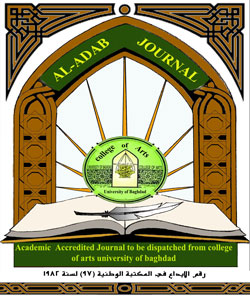Abstract
The object of the study is to look at the English (TT) translation of لعل la’ala and عسى ‘asaa in Arabic Text (ST) of the Holy Quran. They have the same meaning with little differences. Their renderings are investigated and analyzed semantically according to contextual and cohesive meaning of certain texts, i.e. the aayas (verses). The question is: do the translators (al-Hilali &Khan and Irving) succeed in rendering the meanings of the two items from Arabic (source text) into English (target text)? Are there differences between the two translations, or the two items?
The study is drawn out that the translators have relatively succeeded in rendering l’ala and ‘asaa. However, it is shown that Arabic (SL) is semantically more precise than English, and the latter has limited expressions compared to the much meanings of the Quranic expressions. Moreover, the two translations are not different in rendering them though Irving’s is more adequate than al-Hilali &Khan’s.
The study is drawn out that the translators have relatively succeeded in rendering l’ala and ‘asaa. However, it is shown that Arabic (SL) is semantically more precise than English, and the latter has limited expressions compared to the much meanings of the Quranic expressions. Moreover, the two translations are not different in rendering them though Irving’s is more adequate than al-Hilali &Khan’s.
Keywords
contextual and cohesive meaning
Quran translation
semantic study
Abstract
إن موضوع الدراسة هو تقصي ترجمة "لعل" و"عسى" في نصوص قرآنية (النص الاصل) في ترجمتين لمعاني القرآن الكريم في اللغة الانكليزية (النص الهدف). تحمل تلكما الكلمتين المعنى ذاته مع اختلافات بسيطة. والهدف بحث ترجمتاهما وتحليل المعنى الذي يحملانه وفقا للسياق والنص (آيات قرآنية معينة). والسؤال هو هل نجح المترجمون (الهلالي وخان وآيرفنك) في ترجمة معاني المصطلحين المذكورين من العربية (اللغة الاصل) الى الانكليزية (اللغة الهدف)؟ هل يوجد اختلافات بين الترجمتين؟ أو بين ترجمة الكلمتين؟
استخلصت الدراسة نجاح المترجمين نسبيا في ترجمة "لعل" و"عسى". لكنها بيّنت دلاليا أن العربية (اللغة الاصل) أكثر دقة من الانكليزية (اللغة الهدف)، وأن الانكليزية محدودة في تعابيرها مقارنة بغنى المعاني في التعابير القرآنية. إضافة الى أن المترجمين لم يختلفوا كثيرا في ترجمتهم ل "لعل" و"عسى" رغم أن آيرفنك كان أكثر دقة من الهلالي وخان.
استخلصت الدراسة نجاح المترجمين نسبيا في ترجمة "لعل" و"عسى". لكنها بيّنت دلاليا أن العربية (اللغة الاصل) أكثر دقة من الانكليزية (اللغة الهدف)، وأن الانكليزية محدودة في تعابيرها مقارنة بغنى المعاني في التعابير القرآنية. إضافة الى أن المترجمين لم يختلفوا كثيرا في ترجمتهم ل "لعل" و"عسى" رغم أن آيرفنك كان أكثر دقة من الهلالي وخان.
